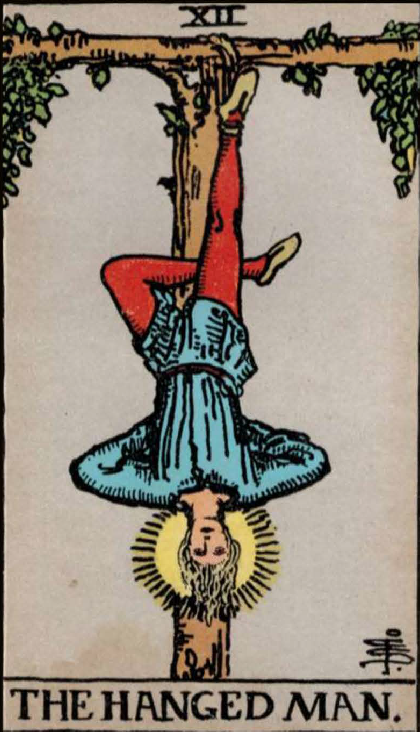The Hanged Man Tarot Card: Symbolism, History, and Meaning
The Hanged Man tarot card is a profound and introspective card in the tarot deck. Symbolizing surrender, sacrifice, and a shift in perspective, The Hanged Man embodies the spirit of introspection, enlightenment, and personal transformation. In this comprehensive guide, we'll explore the historical origins, symbolism, and meanings of this paradoxical card, providing invaluable insights into its role in your tarot readings.
The Historical Origins of The Hanged Man Tarot Card
The Hanged Man, known as the twelfth card in the Major Arcana, is a common figure in tarot decks since their inception. This card was typically depicted as a traitor or criminal being hanged upside down as a form of punishment.
As the tarot deck evolved towards spiritual guidance, The Hanged Man came to represent self-sacrifice, surrender, and the need for a different perspective, often indicating a period of introspection or a pause for reflection.
A Detailed Description of The Hanged Man Tarot Card
The Hanged Man card typically depicts a man suspended upside-down, hanging by his foot from a T-shaped cross made of living wood. His left foot is bound to the tree but his right foot remains free, bent at the knee and tucked in behind his left leg. His arms are bent, with hands behind his back, forming an inverted triangle. He hangs in the position of a reversed "4," symbolizing a need for reflection and a different perspective.
The man is wearing red pants representing human passion and the physical body, and a blue vest for knowledge. His facial expression is calm and serene, suggesting that he is in this hanging position by his own choice. He has a halo around his head, symbolizing new insight, awareness, and enlightenment.
The tree is verdant and living, even though it's used as an instrument of sacrifice. It represents life and the abundance of the universe. The background is a bland grey, unremarkable, signifying unattachment and asceticism.
Despite the precarious situation, the man appears comfortable, suggesting self-surrender and submission to the process. This inverted perspective allows a different view of the world and suggests a voluntary renunciation of worldly things in pursuit of higher spiritual understanding.
The Paradoxical Symbolism of The Hanged Man Tarot Card
The Hanged Man tarot card is filled with paradoxical symbolism, each element offering profound insights into its meaning:
The T-shaped cross: Made from living wood, it symbolizes growth and life's grounding element amidst a state of suspension.
The upside-down hanging: This represents seeing things from a different perspective, surrender, and sacrifice.
The halo: Representing spiritual realization and divine energy, the halo signifies enlightenment gained through surrender.
The red pants and blue vest: They symbolize the balance between passion and knowledge.
The Profound Meanings of The Hanged Man Tarot Card
When The Hanged Man appears in a tarot reading, it typically signifies surrender, letting go, and seeing things from a new perspective. It suggests a time for pause, surrender, and contemplation.
Upright, The Hanged Man symbolizes suspension, sacrifice, and letting go. It suggests a need to view things from a different perspective, to give up for the greater good, or to simply surrender and wait for things to unfold.
Reversed, The Hanged Man might indicate stalling, unnecessary delay, or resistance to letting go. It could suggest a fear of sacrifice or a refusal to see things from a different perspective.
Final Thoughts on The Hanged Man Tarot Card
The Hanged Man tarot card carries a powerful message of surrender, sacrifice, and enlightenment. Its rich history and paradoxical symbolism provide deep insights into your journey through life. Whether you're new to tarot or an experienced reader, understanding The Hanged Man can invite you to let go, embrace a fresh perspective, and understand the power of surrender.
Remember, like The Hanged Man, we all encounter situations in our lives that require us to surrender, let go, and trust the process. Through such surrender, we often gain a higher wisdom and a renewed perspective.
